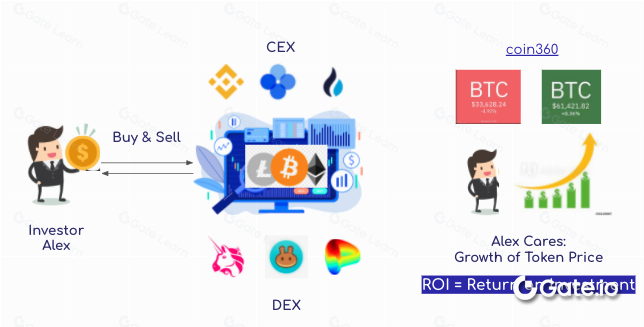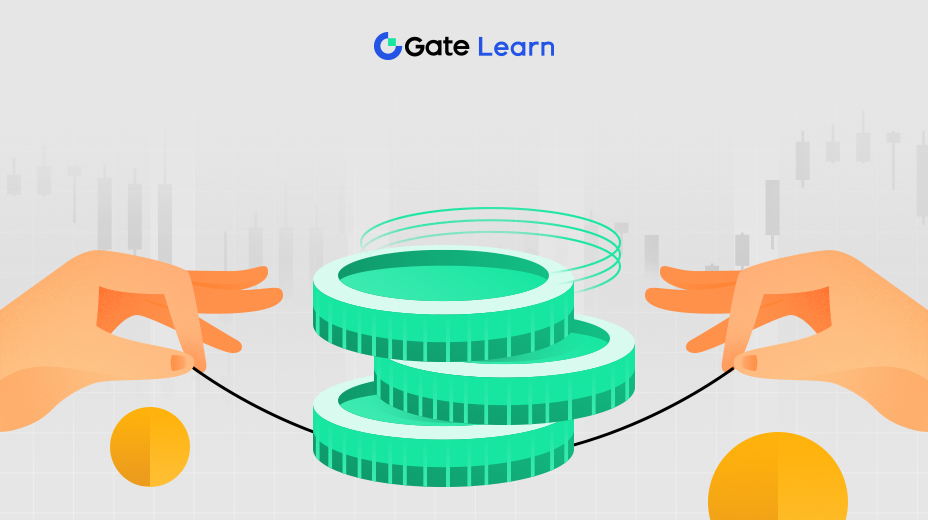[ DeFi ] Comment gagner de l'argent avec les crypto-monnaies grâce au Yield Farming
La DeFi est en croissance. Ce module couvre l'investissement dans la crypto. Il existe de nombreux scénarios comme Dex, le prêt, le farming de rendement, mais c'est un tout nouveau domaine. Vous devriez porter une attention particulière à la gestion des risques.
Le monde DeFi est en expansion rapide, et alors que le système financier mondial continue sa transformation vers la numérisation, DeFi a un très grand potentiel de croissance, attirant l'attention de plus de 3 millions d'investisseurs dans le monde. Il est donc essentiel de comprendre les actifs, les marchés, les approches d'investissement, etc.

Analyse de l'empreinte -TVL par protocoles
Nous avons couvert les bases de DeFi dans l'article précédent. Dans celui-ci, nous plongerons dans :
3 grandes catégories d'investissement DeFi;
Comment les investisseurs gagnent un revenu passif en participant à l'investissement DeFi;
Risques actuels des projets DeFi; et
7 perspectives pour évaluer un projet DeFi
2 façons d'investir dans les cryptomonnaies
En ce qui concerne les types d'investissements dans les cryptomonnaies, ils peuvent être divisés en fiat et basés sur des jetons.
Investissement basé sur des devises fiat
- Les cryptomonnaies (également appelées jetons) sont considérées comme des actions, alors CEX ou DEX est une bourse.
- Alex, un investisseur, peut acheter et vendre des cryptomonnaies sur CEX ou DEX, vendant haut et achetant bas pour gagner la différence et générer des revenus, appelé “spéculation”.
- Dans ce cas, tout ce qui intéresse Alex, ce sont les variations de prix des cryptomonnaies, en utilisant le ROI (Return on Investment) comme indicateur d'évaluation.

Source: zoni@Footprint.network
Basé sur les jetons (ou l'agriculture de rendement)
- Lorsque les investisseurs sont optimistes à long terme sur certaines crypto-monnaies, la stratégie d'investissement la plus simple est de les "garder"; tandis qu'une stratégie plus intelligente est de mieux les utiliser en créant un revenu passif plus important.
- Par exemple, l'investisseur Alex peut déposer des cryptomonnaies sur la plateforme de prêt Compound ou l'agrégateur de rendement Idle pour des revenus d'intérêt.
- Dans ce cas, tout ce qui intéresse l'investisseur Alex, c'est la croissance du nombre de cryptomonnaies et le rendement annuel en pourcentage (APY) généré grâce au Yield Farming.

Source :zoni@Footprint.network
Nous approfondirons notre discussion sur le Yield Farming en introduisant les 3 principales catégories d'investissement DeFi, qui sont : AMM DEX, Ledning et Yield Aggregator.
DEX : Uniswap comme exemple
Uniswap est construit sur Ethereum en tant qu'échange décentralisé et prend en charge toutes les crypto-monnaies de ce réseau. Contrairement aux bourses d'ordres traditionnelles, il utilise un algorithme AMM (Automated Market Maker) pour permettre aux utilisateurs d'échanger divers jetons ERC-20 avec une efficacité accrue.
Dans le modèle AMM d'Uniswap, un fournisseur de liquidité (abrégé en LP) est requis pour créer un pool de liquidité pour les traders afin d'échanger les jetons nécessaires.
Il y a 2 scénarios inclus.
Pour les traders, ils échangent
Supposons que 1 ETH soit égal à 2220 DAI, et le trader Alex veut échanger ses DAI contre de l'ETH. Il doit payer 2220 DAI plus des frais de trading (pour une meilleure compréhension, tous les scénarios dans cet article ignorent les frais de gaz) pour obtenir 1 ETH.

Source: zoni@Footprint.network
Pour les LP, ils fournissent de la liquidité.
Endy en tant que LP doit fournir une paire de deux jetons (par exemple DAI+ETH) au pool de liquidité avec une valeur égale. En retour, il recevra une partie des frais de transaction des activités commerciales. Il recevra également un jeton LP, qui est le justificatif pour fournir de la liquidité et représente sa part du pool de liquidité global.

Source: zoni@Footprint.network
Comment réalise-t-il la tarification automatique? Cela nous amène au modèle de "marché maker de produit constant" derrière le mécanisme AMM d'Uniswap. La formule pour ce modèle est: x*y=k, où x et y représentent la liquidité de chacun, k est une constante.

Source : zoni@Footprint.network
Il convient de noter que le modèle ne varie pas de manière linéaire. En fait, plus la quantité relative de la commande est grande, plus l'ampleur du déséquilibre entre x et y est grande. Autrement dit, le prix d'une grande commande augmente de manière exponentielle par rapport à une petite commande, ce qui entraîne une augmentation de l'écart de glissement.

Figure: Courbe de variation des prix Uniswap
Dans le processus de fourniture de liquidité, les LP doivent être conscients des pertes impermanentes.
Qu'est-ce que les pertes impermanentes ?Voici un exemple.
En supposant qu'Endy détient 2000 DAI et 1 ETH (1 ETH = 2000 DAI), il a 2 options.
Option 1 : en tant que LP
- Fournir 2000DAI + 1 ETH pour former une paire de jetons pour le pool de liquidité
- Lorsque le prix change: ETH = 4000DAI (en dehors du DEX), les arbitragistes achèteront de l'ETH sur Uniswap (moins cher) et le vendront à d'autres DEX à un prix plus élevé
- Cela entraînera une diminution du nombre d'ETH dans le pool et une augmentation du prix de l'ETH jusqu'à ce qu'il atteigne 4000DAI. (l'opportunité d'arbitrage disparaît)
- À ce stade, le jeton LP d'Endy vaut 2828 DAI + 0,71 ETH, ce qui équivaut à détenir 5657 DAI.
< Option 2: il suffit de les conserver
- Lorsque le prix de l'ETH passe à 4000DAI, les actifs d'Endy équivalent à détenir 6000DAI.
Dans les mêmes conditions, “l'option 1 fournit de la liquidité” est inférieure de 343 DAI à “l'option 2 se contente de conserver”, soit une baisse de 5,72%. Cette perte est appelée perte impermanente. Lorsque l'ETH récupère 2000 DAI, cette perte impermanente disparaîtra.
Prêt : Compound comme exemple
Sur la plateforme de prêt DeFi, un investisseur fournit un actif crypto dans le pool pour gagner des intérêts ; si ce dépôt est utilisé en garantie, l'investisseur peut emprunter un autre actif crypto. Actuellement, la plateforme de prêt DeFi utilise généralement une « sur-collatéralisation », où l'emprunteur fournit des actifs valant plus que le prêt réel en cas de défaut.
Alex, l'investisseur, avec du DAI qu'il ne veut pas vendre, le place dans le pool en tant que prêteur pour le prêter à des personnes dans le besoin, gagnant ainsi des intérêts
Bob connaît une bonne opportunité d'investissement en DAI, mais il ne veut pas vendre l'ETH qu'il possède, il utilise donc l'ETH comme garantie pour emprunter des DAI et payer des intérêts.
Dans ce processus, Alex et Bob sont tous les deux récompensés par des jetons de plateforme COMP, ce que nous appelons l'exploitation de liquidité.

Source: zoni@Footprint.network
Aggregateur de rendement: Idle & yEarn
De nos jours, les projets DeFi poussent comme des champignons. Les investisseurs pourraient rencontrer les problèmes suivants :
Trop de plateformes avec des taux d'intérêt différents : comment choisir le meilleur ?
Les taux d'intérêt changent toujours, tout comme les prix :
Les emprunteurs pourraient être liquidés accidentellement, que faire?
Les prêteurs pourraient avoir besoin de modifier les protocoles pour obtenir de meilleurs taux d'intérêt, ce qui entraîne des frais de gaz élevés
Les investisseurs ne peuvent pas surveiller le marché 24 heures sur 24.
Les agrégateurs de rendement DeFi peuvent en quelque sorte résoudre les problèmes ci-dessus, où la valeur d'un actif spécifique fournit une stratégie d'investissement complexe qui combine prêt, engagement et trading pour maximiser les profits.
Inactif
C'est un protocole basé sur Ethereum qui permet aux utilisateurs d'obtenir le meilleur intérêt en investissant dans un seul actif. Il prend actuellement en charge les services financiers de Maker, Compound, dYdX, Aave, Fulcrum et d'autres protocoles. Lorsque vous déposez avec Idle, vous recevrez un APY complexe, composé de l'APR du jeton que vous avez déposé, du jeton de plateforme IDLE et COMP.
yEarn
Il s'agit également d'un protocole sur Ethereum ayant pour objectif principal de générer le meilleur rendement pour les jetons déposés. Il propose une gestion d'actifs programmatique pour déployer la meilleure stratégie.
Prenons le coffre-fort ETH comme exemple.
L'investisseur dépose de l'ETH dans le coffre-fort ETH, qui déposera de l'ETH dans MakerDao comme garantie pour emprunter la stablecoin DAI.
Le DAI emprunté est déposé dans le pool de liquidité de Curve Finance, recevant en retour des jetons LP et des frais de négociation sous forme de rendements de base APY. Le jeton LP peut être mis en jeu dans le CRV gauge de Curve pour gagner des récompenses CRV.
Le CRV gagné est ensuite converti en ETH et sera déposé à nouveau dans le coffre-fort ETH. Un tel cycle continue jusqu'à ce que l'investisseur retire.
L'investisseur reçoit finalement des intérêts réglés en ETH et paie un certain montant de frais de gestion.

Source: Financements
Risque des projets DeFi
La diversité des opportunités d'investissement et la croissance continue rendent DeFi attrayant et lucratif. Cependant, comme pour tout investissement, il existe des risques associés à un investissement DeFi.
Risques de protocole
Contrats intelligents : piratés (même avec audit)
- contrat intelligent unique
- protocoles construits sur plusieurs contrats intelligents
Risques de protocole
- scamer: pools avec jeton de protocole + stablecoin offrant un APY élevé
- jeton largué par le pays de Galles causant un prix nul
Volatilité du prix du jeton :
- Emprunter : Faites-vous liquider facilement
- LP: Perte d'implémentation
Risques opérationnels
- Risque de portefeuille : risque de vol de la phrase de récupération, des clés privées
- Autorisation DeFi :
- Annuler l'autorisation du protocole non utilisé
- Ne mettez pas tous vos œufs dans le même panier
Comment évaluer un projet DeFi
Les investisseurs doiventFaites vos propres recherches (_DYORAvant de investir, commencez par les 6 aspects suivants:
Questions de base à poser:
- Quel type, sur quelle blockchain, a-t-il déjà été audité ?
- Lorsque lancé, classement du TVL, utilisateurs sur 24 heures
- Que ce soit sur coingecko, CMC ?
Historique de collecte de fonds avec des inventeurs célèbres
Présentation du projet (site officiel + articles publics + github)
- Modèle économique, concurrents, caractéristiques de différenciation
- Des nouvelles négatives ? Soyez attentif aux rapports Too Good en considérant la neutralité des médias
- Modèle économique (distribution de jetons pour l'équipe : entre 15 % et 20 % est acceptable)
- Fréquence de soumission de code de github
Attention à l’évolution des prix
- Poussée dans un court laps de temps ? Forte probabilité de pompage
- Risques de déversement par une baleine provoquant de fortes baisses
Attention à des rendements extrêmement élevés
- Manière d'attirer les investisseurs par des escrocs
- Essayez prudemment mais courez vite avant qu'il ne s'effondre
Activités de la communauté
- Questions des utilisateurs posées : qualité des investisseurs
- Attitude et efficacité de la réponse de l'administrateur
La finance décentralisée offre un endroit plus pratique pour les investisseurs de choisir comme alternative aux investissements traditionnels. Avec de plus en plus d'investisseurs, d'institutions, de capital et de développeurs qui arrivent, on s'attend à un système financier plus ouvert, transparent et plus sûr.





